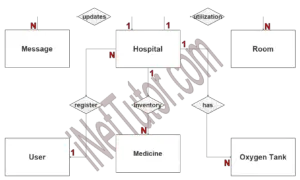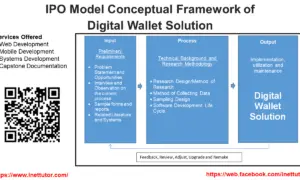Gym Management System ER Diagram
The project entitled Gym Management System is information systems that manages the transactions of a gym or work out and exercise facility. Information included in this project includes the profiling of members, the list of available services, payment transactions that includes the membership fee and other add-ons and the list of available instructors that will guide the customers in their work-out.
This article will discuss the step by step process on how to prepare the entity relationship diagram or ERD of the project entitled Gym Management System.
The first step in the development of the Gym Management System is to prepare the ER diagram that will serve as the basis later on in the creation of the actual database.
We will create and explain the process of making the entity relationship diagram of Gym Management System.
Let’s start from the symbols used in the ER Diagram.
Entity is represented by the rectangle shape. The entity will be our database table of Gym Management System later on.
Attribute is represented by the oval shape. This will be the columns or fields of each table in the Gym Management System.
Relationship is represented by diamond shape. This will determine the relationships among entities. This is usually in a form of primary key to foreign key connection.
We will follow the 3 basic rules in creating the ER Diagram.
- Identify all the entities.
- Identify the relationship between entities and
- Add meaningful attributes to our entities.
Step 1. In the Gym Management System we have the following entities
- User
- Member
- Membership Type
- Instructor
- Workout Plan
- Workout
- Payment
- Promotional Material
Our design of Gym Management System consists of 8 entities; the specified entities will be our database tables in the design and implementation of gym management database schema.
We will now draw the entities of the Gym Management System specified above and it will be represented by a rectangle shape. The image below is the entities identified in the scope of the Gym Management System.
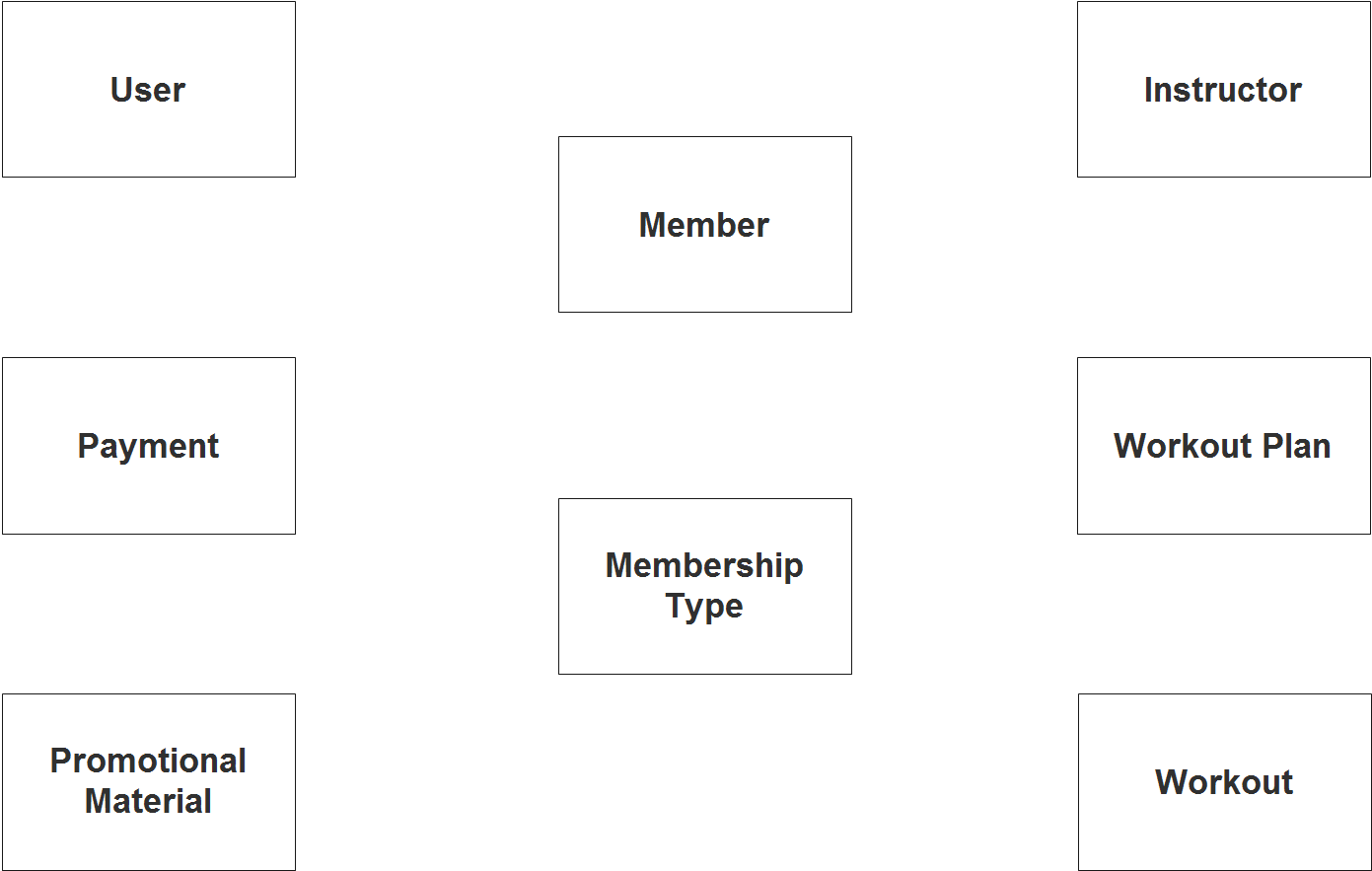
Step 2. After we have specified our entities, it is time now to connect or establish a relationship among the entities.
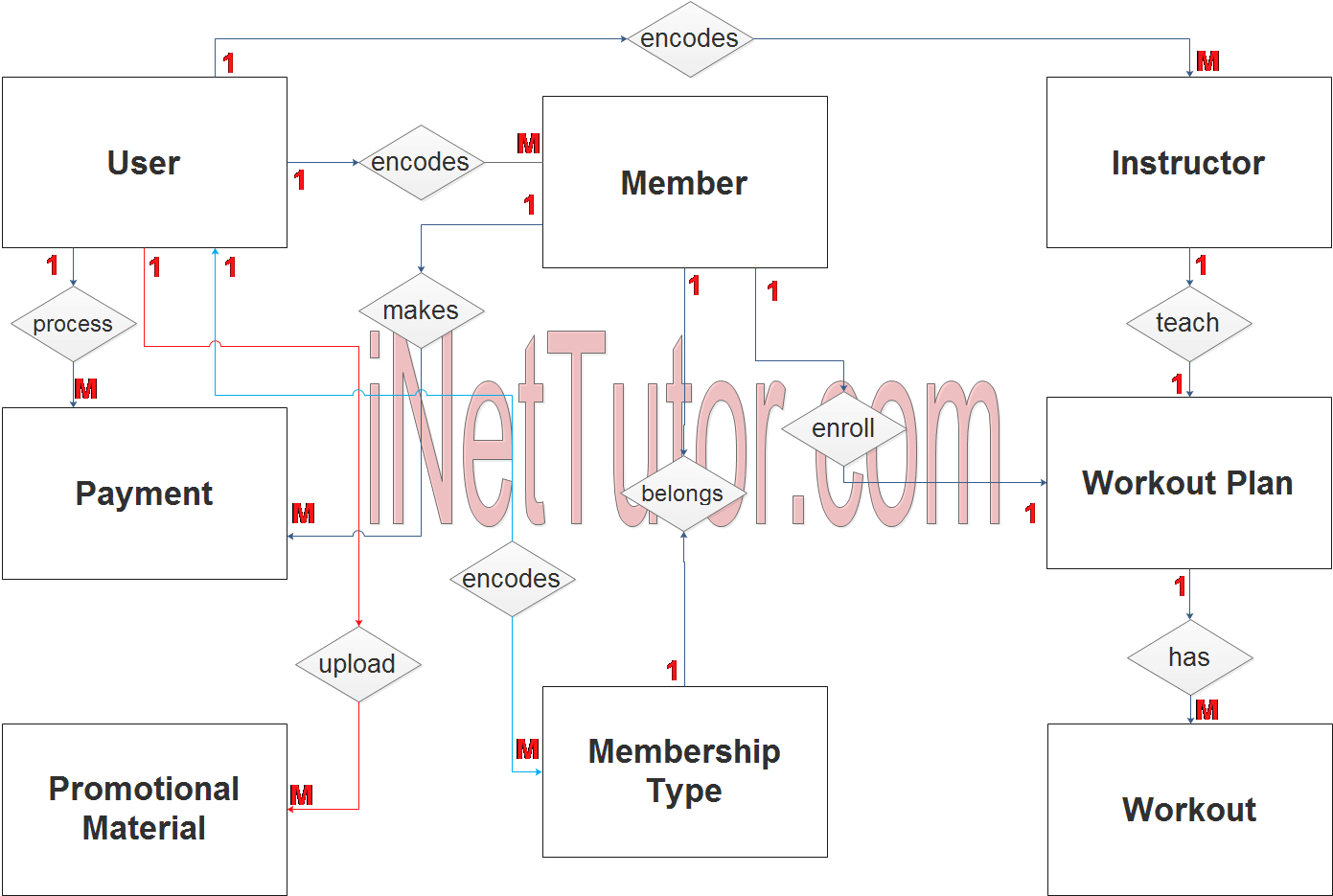
- User encode/update/manage the member information (1 to many relationship).
- User encode/update/manage the gym instructor information (1 to many relationship).
- User encode/update/manage type of membership application (1 to many relationship).
- User processes the payment made by the customer (1 to many relationship).
- User uploads promotional material (1 to many relationship).
- Member belongs to a specific type of membership plan (1 to 1 relationship).
- Member makes payment for the membership and other fees (1 to many relationship).
- Member can only enroll to a specific workout plan (1 to 1 relationship).
- Instructor teaches or guides a specific workout plan (1 to 1 relationship).
- Workout plan includes multiple types of workouts (1 to many relationship).
Step 3. The last part of the ERD process is to add attributes to our entities.
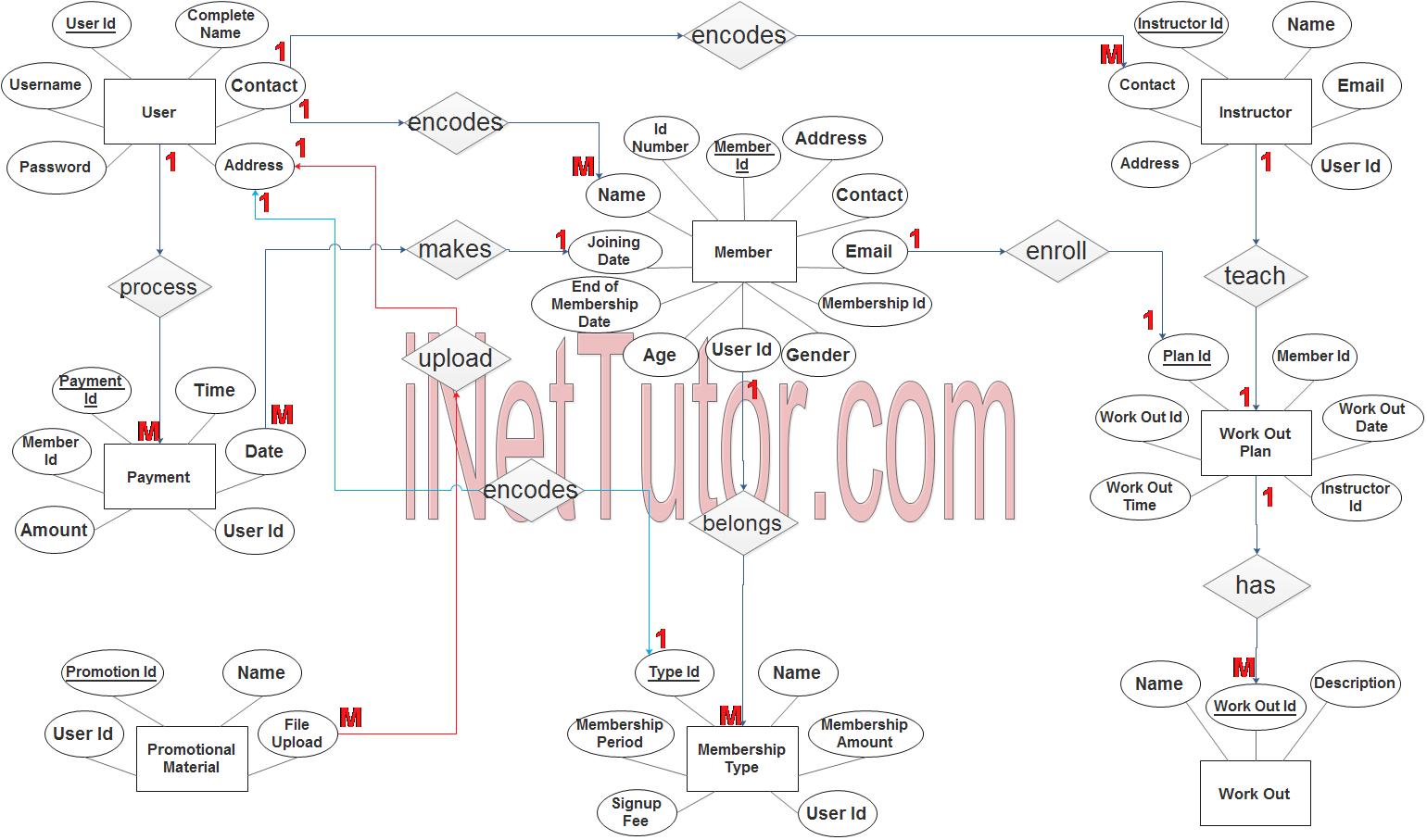
User Entity has the following attributes:
- User ID – primary key represented with underline
- Complete Name
- Contact
- Address
- Username
- Password
Member Entity has the following attributes:
- Member ID – primary key represented with underline
- ID number
- Name
- Address
- Contact
- Gender
- Age
- Joining date
- End of membership date
- Membership ID – foreign key
- User ID – foreign key
Membership Type Entity has the following attributes:
- Type ID – primary key represented with underline
- Name
- Membership Amount
- Membership Period
- Signup Fee
- User ID – foreign key
Instructor Entity has the following attributes:
- Instructor ID – primary key represented with underline
- Name
- Contact
- Address
- User ID – foreign key
Workout Plan Entity has the following attributes:
- Plan ID – primary key represented with underline
- Member ID – foreign key
- Work out ID – foreign key
- Workout date
- Workout time
- Instructor ID – foreign key
Workout Entity has the following attributes:
- Work out ID – primary key represented with underline
- Name
- Description
Payment Entity has the following attributes:
- Payment ID – primary key represented with underline
- Member ID – foreign key
- Time
- Date
- Amount
- User ID – foreign key
Promotional Material Entity has the following attributes:
- Promotion ID – primary key represented with underline
- Name
- File upload
- User ID – foreign key
Note: all attributes with underline represents the primary key of the entity or table.
The next step is to convert the plan designed on ER Diagram into the actual database, please search for the Gym Management System article which was already posted.
Contact us on our facebook page for the softcopy of the Gym Management System.
You may visit our facebook page for more information, inquiries and comments.
Hire our team to do the project.
